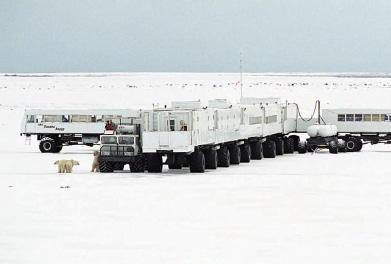The Great White Bear (20 page)
Read The Great White Bear Online
Authors: Kieran Mulvaney

When measuring and bagging one bear, a team of two scientistsâfrequently enlisting the help of the pilotâtakes about an hour to run through the checklist, watching all the time to be certain the subject isn't overheating or otherwise suffering. With multiple bears, such as a mother and cubs, the same process may take an hour and a half. When all is done, the researchers spray a number on the pelt: an advisory, until it disappears when the bear molts, that this individual has been captured and tagged already this season and should not be so again, and a caution flag to any Native hunters that it has been injected with a small amount of tranquilizer, which is often cause for them to allow it to pass by.
If the process seems intrusive, it is, for many polar bear biologists, the extent of their hands-on experience of the animals they study: a view from an aircraft, a tranquilizer dart, an hour or perhaps two measuring and weighing, and the opportunity, while on the ground or in the air, to infer behavior from cluesâtracks here, a seal carcass there.
Facts and figures about how far and where polar bears roam are derived more from plotting GPS signals from radio collars than from direct observation. The inaccessibility and inhospitability of the polar bear environment, coupled with the sheer extent and unpredictability of an individual bear's movement, make prolonged observations in the field all but impossible.
"There are some places where you can do direct observations, but direct observations can only give you so much information, and they're only possible in certain very limited portions of the polar bear range," explains Steven Amstrup of USGS. "So, for example, by going out and staying out in a cabin where there are polar bears, and watching them, you can understand certain things about their behaviors and watching them. If you're lucky, like Ian [Stirling] was when he was watching polar bears feeding, he was able to watch them hunting seals; that's not possible most places. But even that only gives you a glimpse of certain aspects of the polar bear lifestyle. It doesn't tell you anything about population dynamics, for example.
"Almost all of what we know about polar bears we know from capture/recapture: flying out in helicopters, darting them, catching them, ear-tagging them, and then doing it again."
But, while the nature of polar bears may seem to preclude the emergence of an Arctic ursine Dian Fossey, there are a few locations where they congregate at the beginning and end of each season, locations where, for at least certain periods of the year, a dedicated biologist can base himself or herself, where he or she can watch and learn and develop an awareness of polar bear behavior that cannot be ascertained from any radio collar or tooth cross section.
On Wrangel Island, Nikita Ovsyanikov continues to this day the long-term study he began in 1990. And on the southern shore of Hudson Bay, for over forty years researchers have watched at Cape Churchill as polar bears gather en masse before heading out onto the newly frozen sea ice.
Wrangel Island is forbidding and remote; it took several days of grinding through thick sea ice for the
Arctic Sunrise
to reach its coast in 1998. Ten years later, a trip to Hudson Bay required nothing more onerous than a ticket to board a train.
That accessibility makes southern Hudson Bay and its environs unique. It is more than a location from which scientists can watch polar bears up close. It is the only place on Earth where, for several months a year, the worlds of polar bears and humans intersect, where tourists join locals for a glimpse of an animal they could not hope to see anywhere else. It is where a young polar bear is shaking off the effects of a tranquilizer as it heads toward the coast while, several hundred miles to the south, a train travels slowly through the night, rattling quietly northward.
 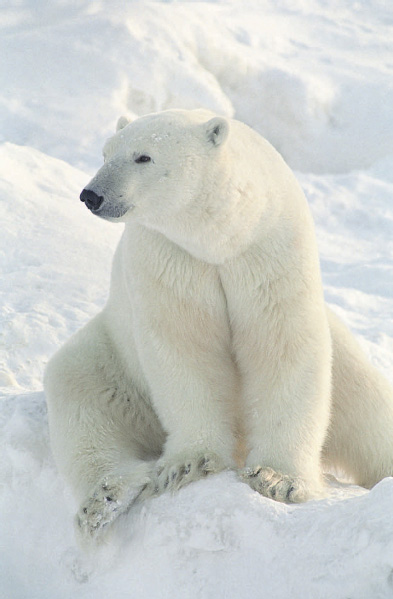
Mature polar bears are mostly solitary.
Robert and Carolyn Buchanan/
PolarBearsInternational.org
 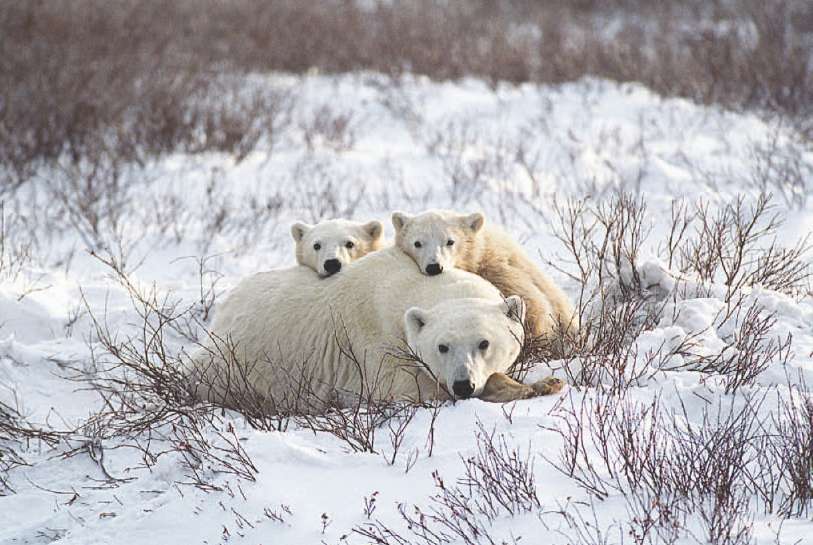
A polar bear mother and two cubs rest in the snow.
Robert and Carolyn Buchanan/
PolarBearsInternational.org
 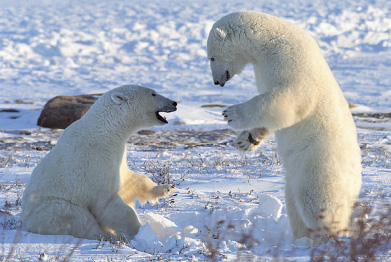
Two young males spar in the snow near Canada's Hudson Bay. Although playful, such sparring can sometimes inflict bloody wounds.
Robert and Carolyn Buchanan/
PolarBearsInternational.org
 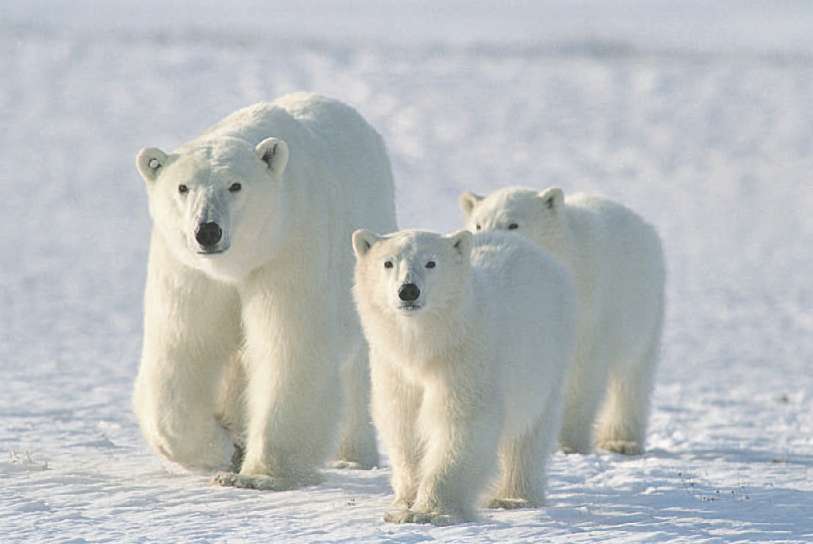
Cubs stick close by their mother's side for the first two years of their lives.
Robert and Carolyn Buchanan/PolarBearsInternationalorg
 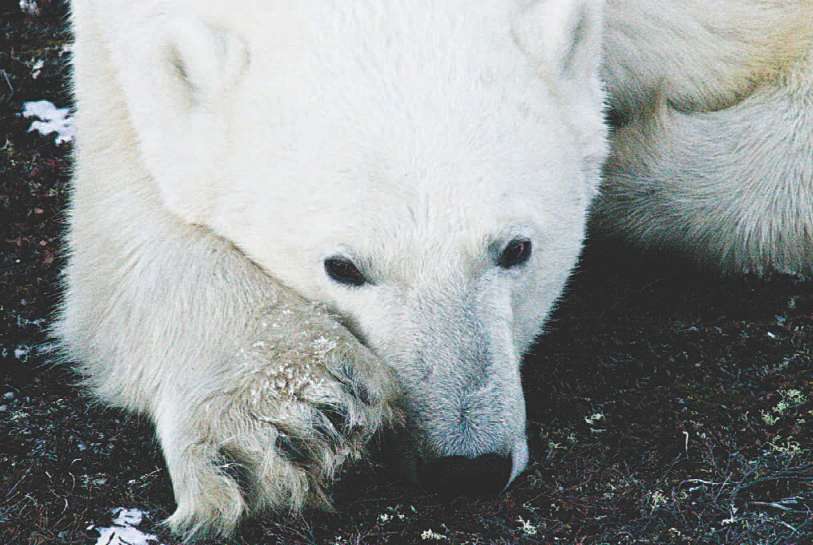
A polar bear's forepaws are massive - ideally suited to act as snowshoes, paddles in the water, and powerful weapons with which to strike seals.
Kieran Mulvaney
 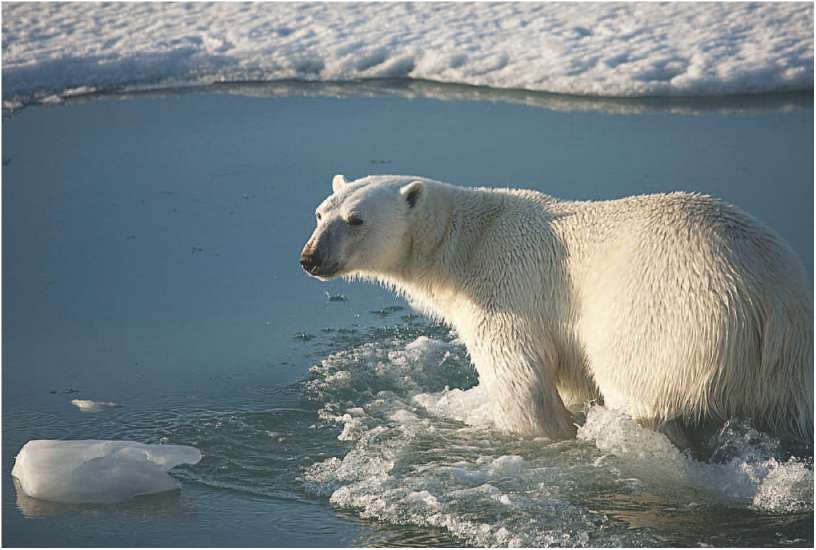
Polar bears are perfectly at home in the water for short periods.
Nick Cobbing
 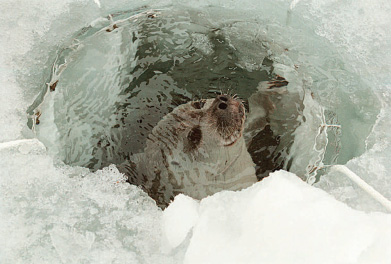
A ringed seal about to surface at a breathing hole in the ice. The outlines of a net used by researchers to capture seals for tagging and measuring can just be seen at the hole's perimeter.
Brendan P. Kelly
 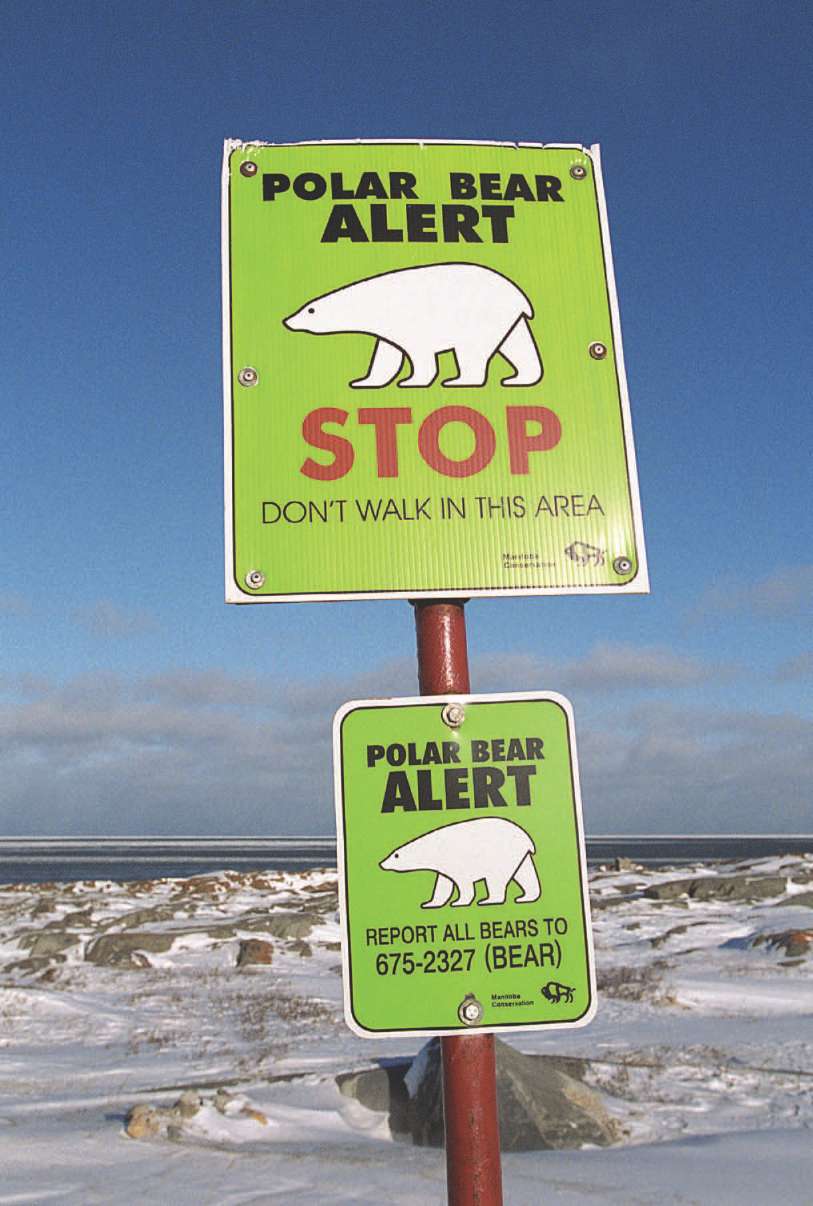
In Churchill, Manitoba, the "Polar Bear Capital of the World," residents and visitors alike are warned to keep their eyes open.
Robert and Carolyn Buchanan/
PolarBearsInternational.org
 